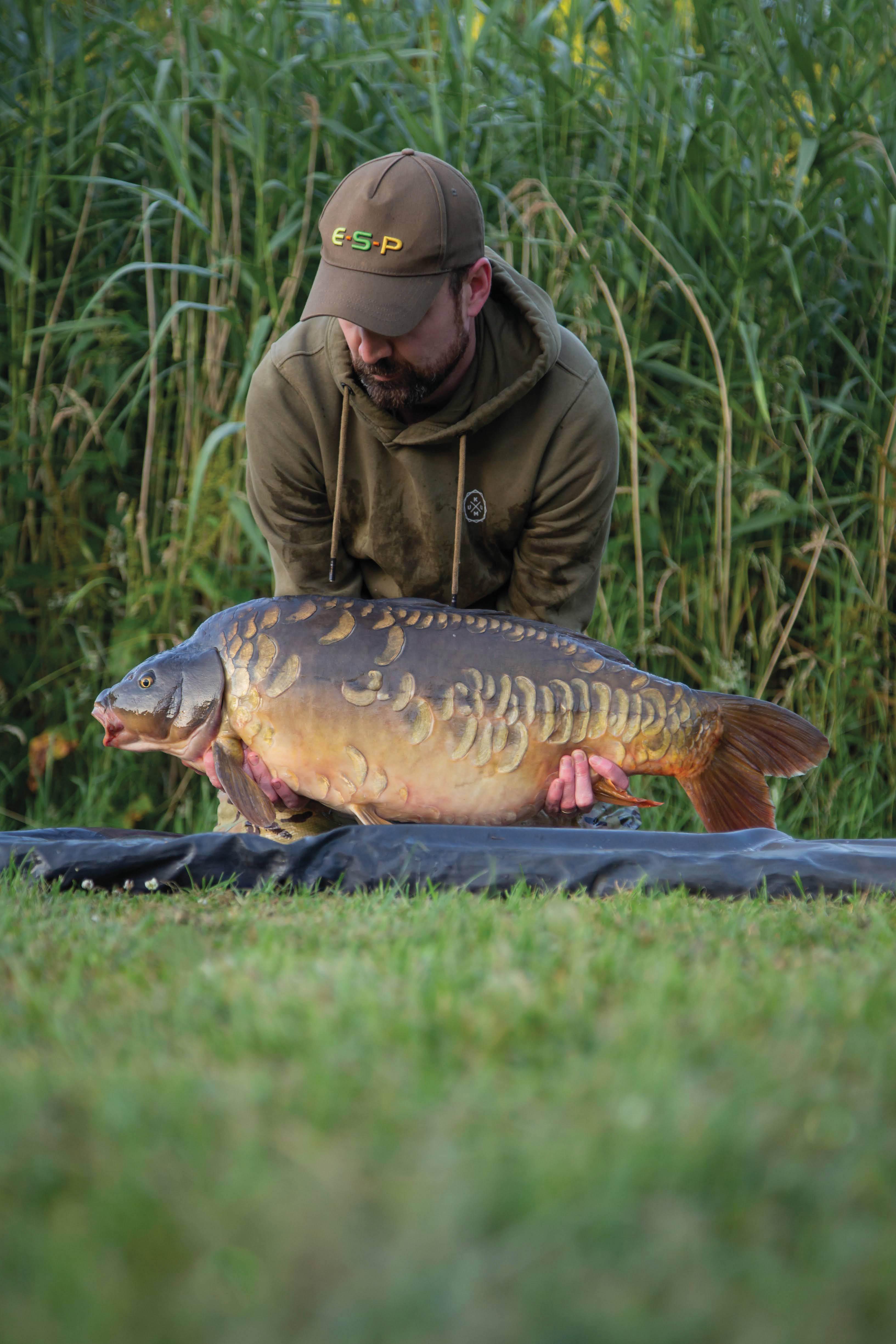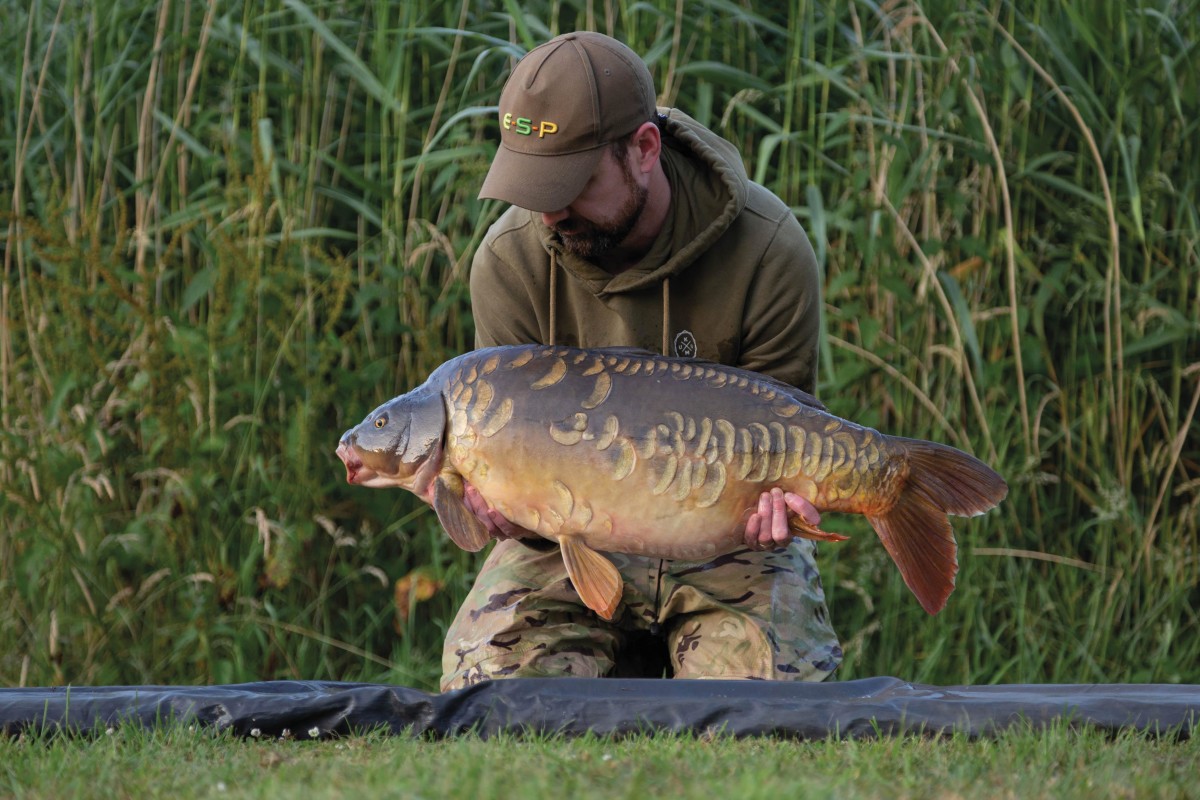
Arrow Meadow Pools
Stu Lennox heads to the West Midlands to sample the fishing on a rather unique water, one with a relatively short, but nonetheless quite special history...
Set in four and half acres of countryside south of Birmingham, Arrow Meadow Fishery comprises two pools and a stretch of the River Arrow. The one-acre Main Pool, dug back in 1995, and the smaller Pleasure Pool nestle in the stunning grounds of a house that was once owned by Terry Thomas, presenter of the 1970s television programme, Fishing Today. It was Terry who coined the phrase ‘Tight lines’ and he would end all his shows with the now, well-used expression.
Terry and fellow television presenter, Chris Tarrant, would often fish the pool together, but following the sale of the property, nature reclaimed it. In 2017, current owners, Alan and Lorraine, went to view the house, which was up for sale once again. The vendors mentioned the pool on the adjacent land, and offered it for sale alongside the house. When Alan went to look for the lake, he couldn’t actually see it. It had become completely enclosed by vegetation and huge, overgrown trees. Nonetheless, the sale of both house and lake went ahead, and Alan later set about the lengthy task of returning the pool to its former glory. Given how the pool had become so overgrown, initially, Alan couldn’t access the water’s edge. Five feet of silt had accumulated in the pool itself. Essentially, it was nothing more than a bog, so much so that the three-ton digger Alan hired wasn’t up to the job. Only when he upgraded to a 13-ton monster, and enlisted the help of the local farming community, did he began to make inroads.
Over the next year, Alan and his team of helpers completely transformed the pool, returning it to something resembling a fishing lake. A number of trees were removed and the lake was drained. With the silt also removed, the pool was dug out again. Fresh bankside vegetation was planted as it began to take shape once more.
Stocking of the reclaimed pool began in the winter of 2018. Alan had taken the decision to move from the city and become a fishery manager, and he’s the first to admit that his knowledge of what might lie ahead was limited. Fortunately, the carp-farming community was forthcoming with plenty of advice. Viv from VS Fisheries and Ant from AJS Fisheries were particularly helpful, as Mark Simmonds has been, latterly. The initial stocking of 30 VS fish comprised an equal split of C4s, C5s and C6s. Three AJS fish followed, and a further five VS fish were stocked in 2019. In 2020, 19 AJS fish and 21 VS fish were added. Finally, in February 2022, 12 Simmos were stocked to provide a fast-growing variety. Taking into account carp lost each year through spawning, the stock now stands at 65 fish. Of these, eight to ten are known thirties, the lake record currently standing at over thirty-six pounds.
Throughout the stocking period, Alan encountered weed, algae and oxygen issues. These, however, have all been overcome, thanks to the ongoing support and advice received from Viv. The pool has since gone from strength to strength. Fishing commenced in 2019, and in 2020, the Main Pool was extended to its current one acre.
The site is totally secure. It’s fully fenced, with electronic gates, and with CCTV, too, you’re able to relax and enjoy your fishing without fear of interruption or disturbance. Within the security fence is an otter fence. The River Arrow lies adjacent and otters frequent the waterway. There is a toilet and shower block, and Alan is always on hand to offer as much or as little help as you need as you tackle the lake.
The Pleasure Pool is just behind the Main Pool, and is available exclusively for those booked on the larger piece of water. Without giving too much away, the Pleasure Pool holds a crazy variety of species. It produces so many surprises, and makes for a nice break for anyone fishing the Main Pool, especially if that’s proving hard going.
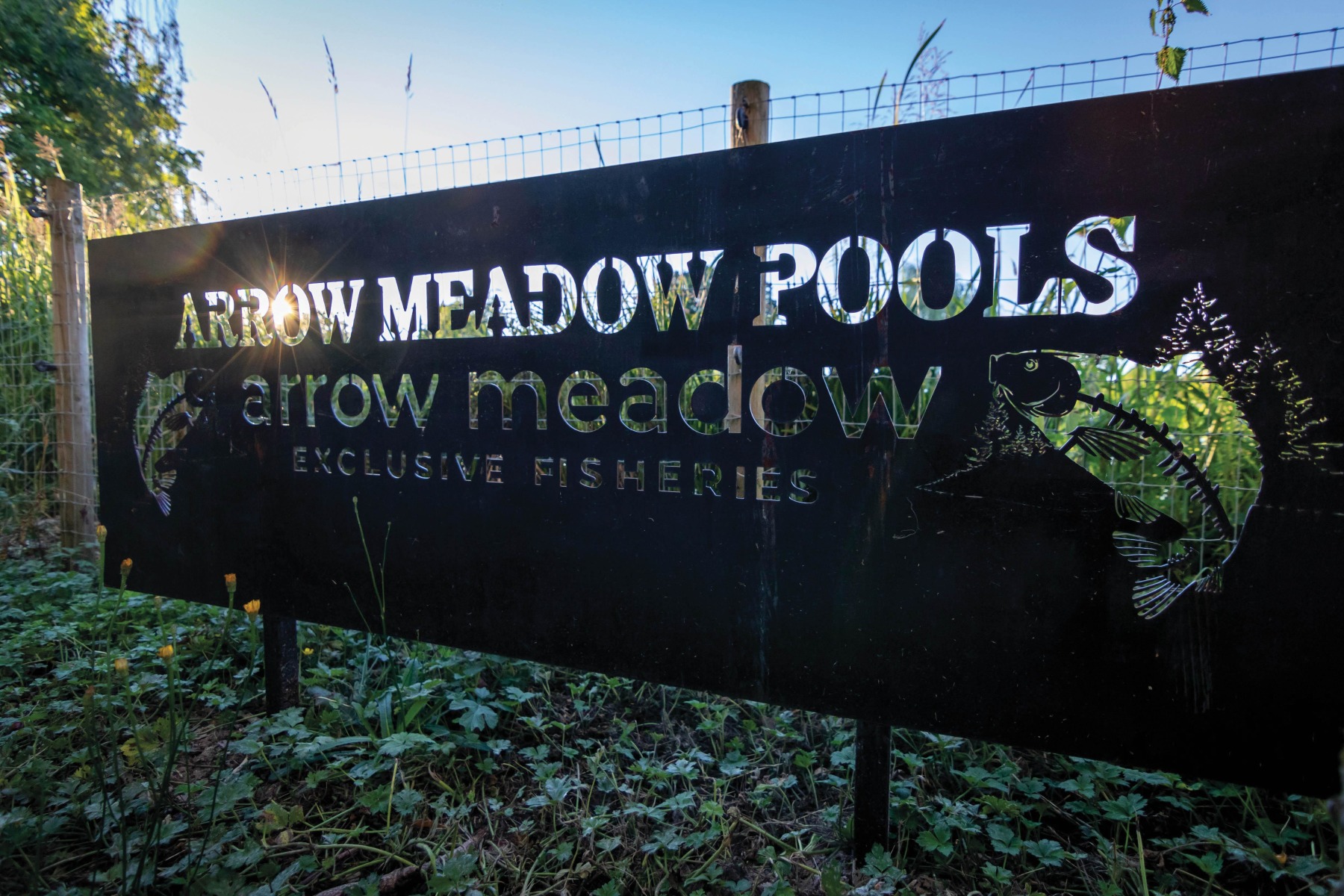
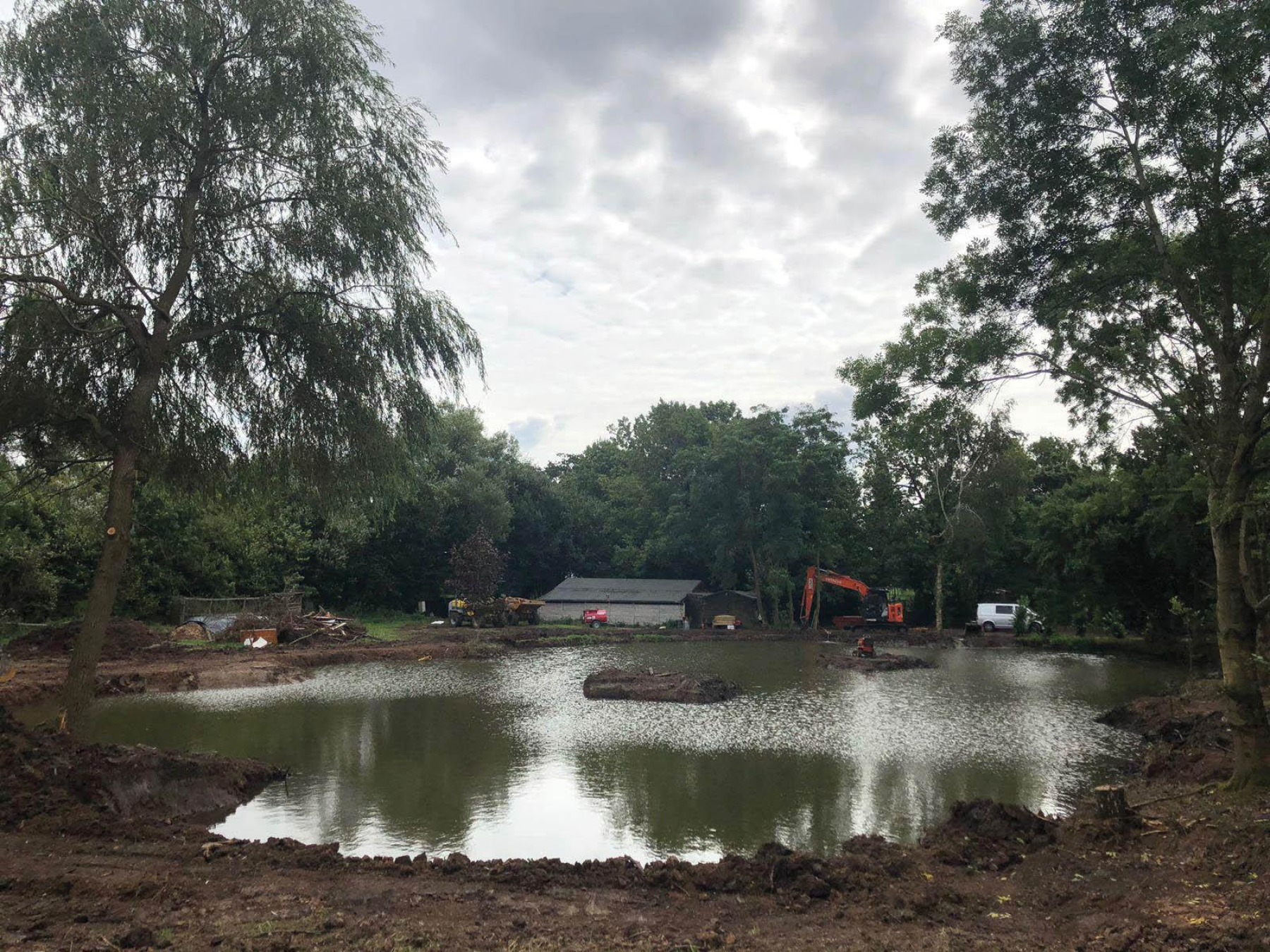
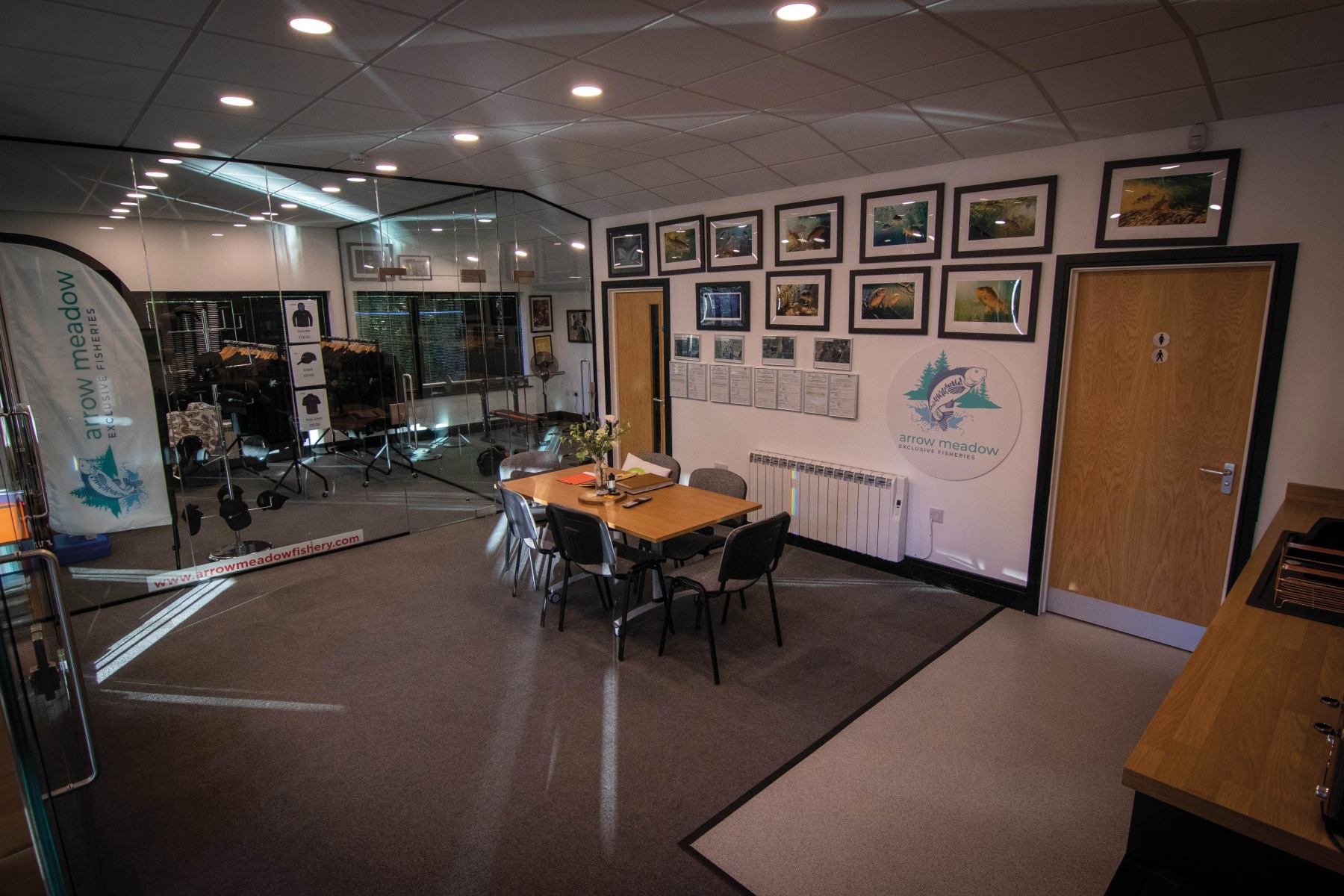
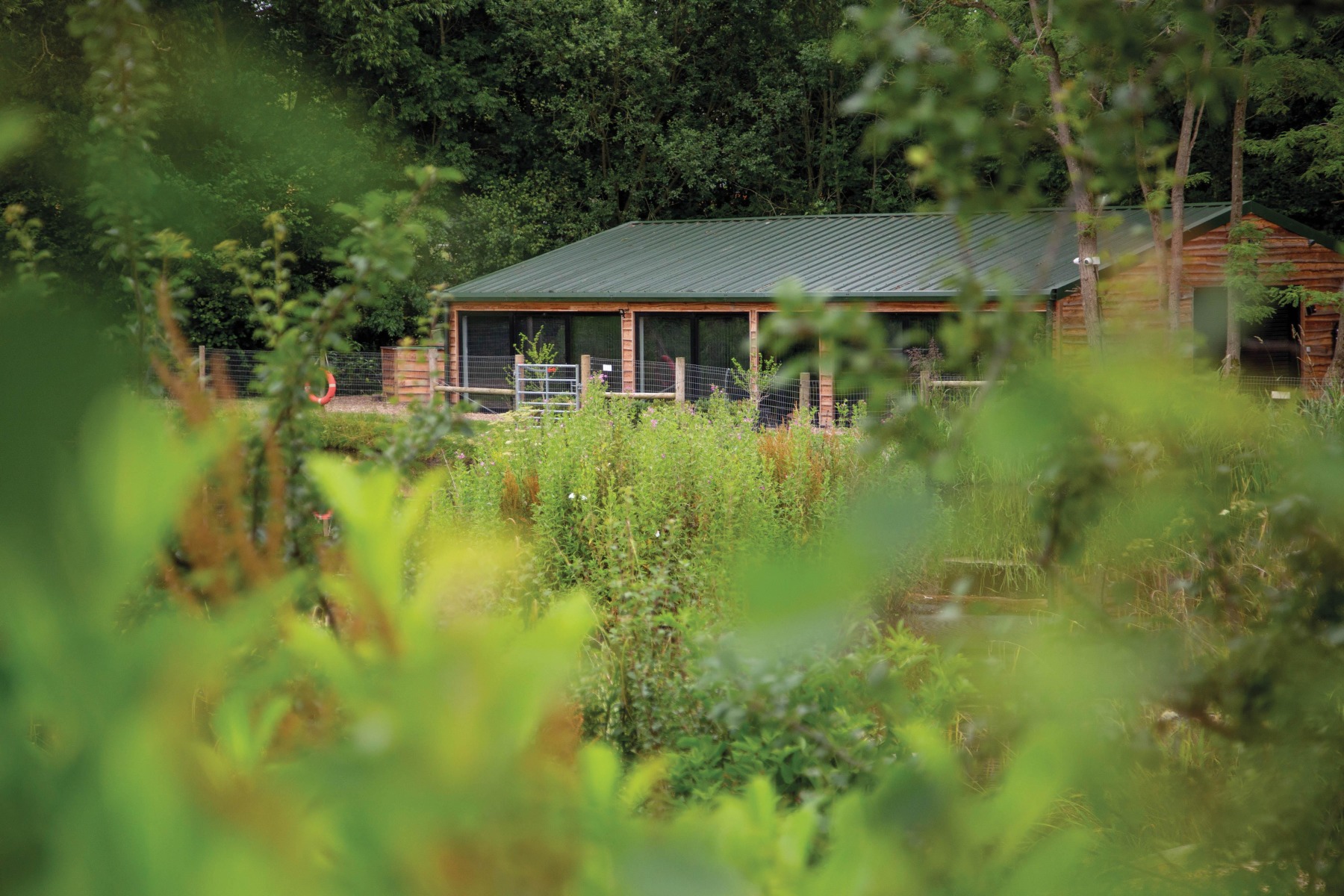
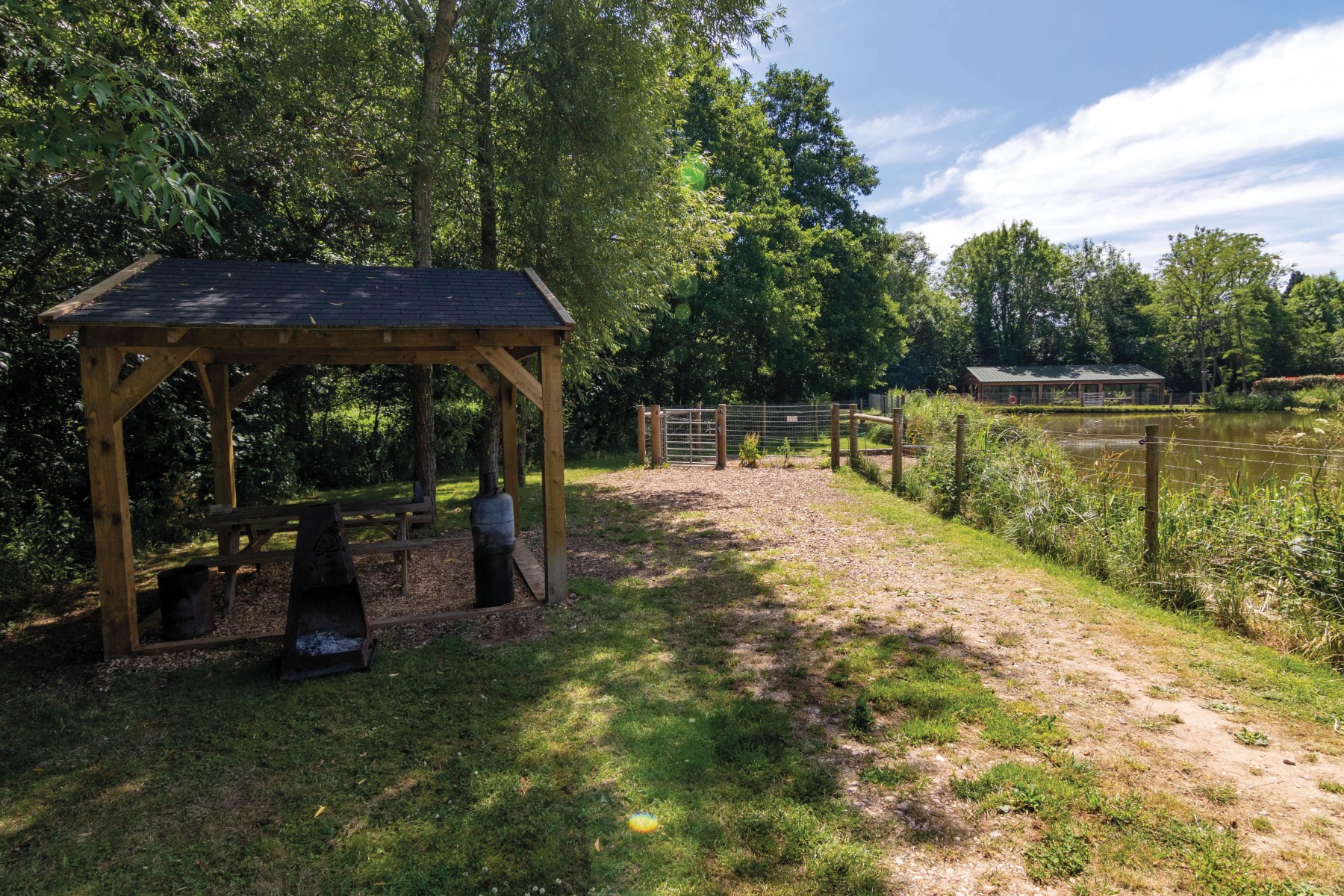
This month’s ‘Open Access’ almost didn’t go ahead. Chris had an important work event, and I had recovered from Covid only the day before and was exhausted. With oppressive heat forecast, I knew I was going to have to take things slowly as I felt my way into the session.
As I drove through the gates of the fishery, I was greeted by an incredible, intimate-looking pool, and all was instantly forgotten. The pool features a large island with an overhanging willow, and a couple of ‘dot’ islands. What immediately struck me, was just how mature the edges were. Every margin was adorned with reeds, bulrushes, and a whole host of other bankside vegetation.
The complex itself is immaculately maintained. There are defined paths and grassed areas, and the toilet and shower were spotless. It had a very ‘holiday carping’ feel to it. It was a bit like taking a trip to France, but without the travelling or the cost. There are even 240v power supplies in two of the three pegs. The two main pegs are sited at either end of the lake, and a sort of in-between peg is tucked away in the corner nearest the office block.
Cameraman Tom and I were greeted by Alan, who is, hands down, the nicest, friendliest lake owner we have met on our travels so far. He was a fount of knowledge, and told us everything we needed to know about the habits of the fish and the best way of tripping one up, as we did a lap of the lake. He showed us his stocking album, which documents every single fish that has gone into the pool, along with its weight, each time it’s caught. Surprisingly, for such a small lake and generous stock, for each fish, only a handful of captures were detailed, a couple coming out just once or twice during the last year or so. The fish are fed house pellet on a regular basis, and we were sure to grab a bucketful from Alan before he left us to it—presenting the fish with a food source they are so used to was a no-brainer.
QUICK BITE?
I decided that the margins were to play a big part in my approach over the next couple of days. I started by walking the banks with my leading rod, touching it down around likely-looking features as I tried to identify harder areas or obvious changes in depth. As I stood under a tree in the peg nearest the entrance, just about to drop my lead, a huge, heavily plated fish drifted in and flanked hard, right at my feet. I looked a little closer and saw that there was at least one other fish under the tree. Feeling like there was a chance of a quick bite, as quietly as I could, I backed out before heading to the car for some gear.
I chose to go in with a solid bag, expecting there to be some debris present from the tree branches. As I was stalking and hoping for an instant response, I used a piece of plastic corn topped with a couple of worms. Naturals are an excellent stalking bait, and worms are particularly good. Quietly and slowly, I made my way back into the peg before I waited and watched for a while. The fish had drifted out, and this gave me the opportunity to set my trap. The bag was dropped under the branches, and I took care to ensure that my fluorocarbon leader was laid out perfectly, a couple of large blobs of putty keeping it pinned to the deck. I fed a couple of handfuls of chopped worm, pellet and crushed boilie over the top, and sat back.
Over the next couple of hours, I saw a few fish drift in. There was even a little disturbance and fizzing directly over the bait, but a bite was not forthcoming. In the end, I swung in my rig to check it, as I felt a bite had surely been on the cards. The worms had been ripped from the hook, but other than that, everything was fine. Back at the car, I tied up another bag, and then reset my trap.
I sat there for a couple more hours, watching activity over the spot. Again, no bite materialised. I have no idea why that rod never produced. A huge number of perch were present, however, and they tore the worms from the rig within minutes of it being placed in the water. Whether they were throwing the rig around, spoiling the presentation and preventing a carp from picking up what remained of the hookbait, I will never know, but after a total of five, fruitless hours, I admitted defeat and went to sort my peg, and some spots for the evening.
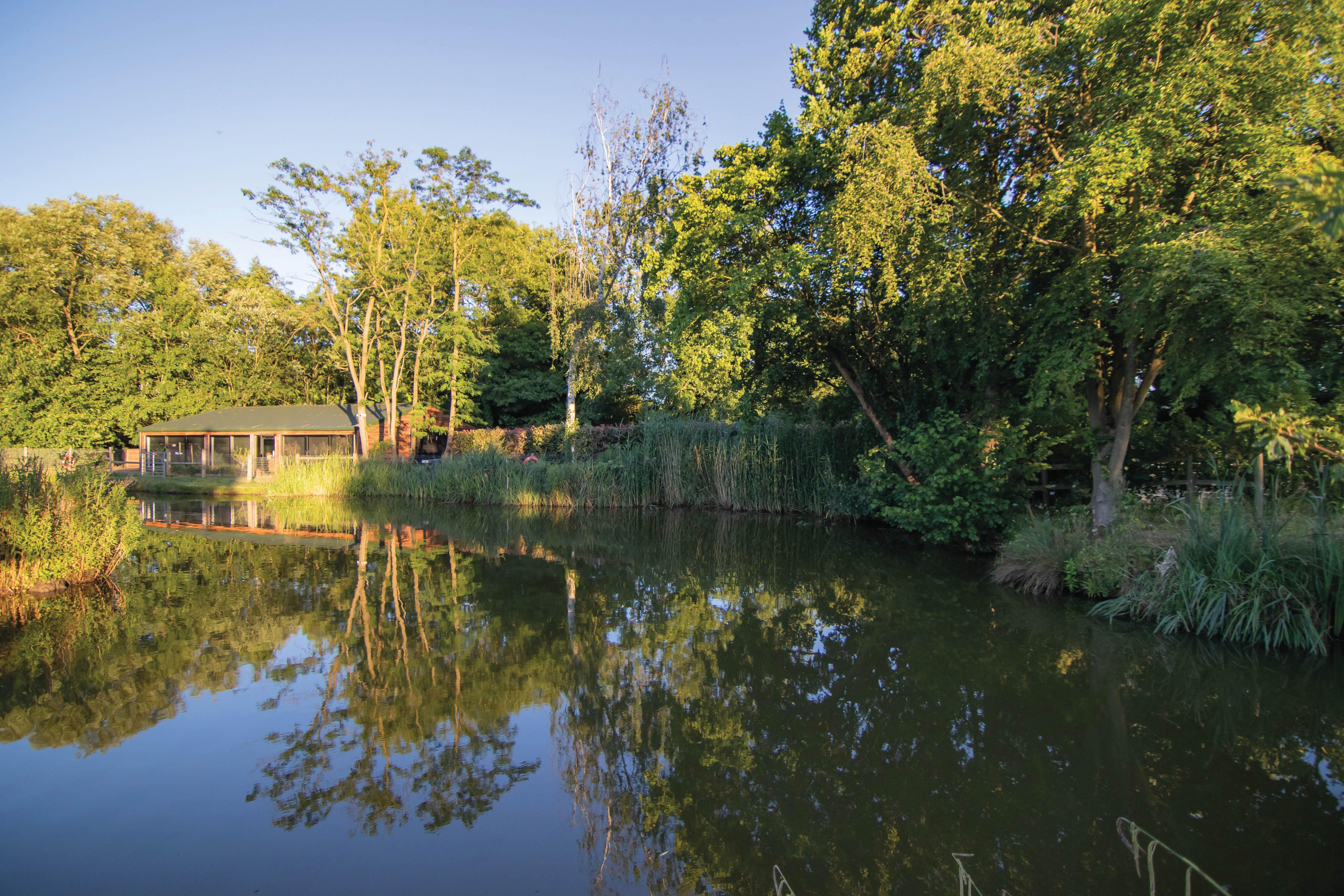
TOO MANY OPTIONS!
The main issue with Arrow Meadow is that, even with ten rods, you couldn’t fish every carpy-looking spot. There were a dozen margin spots, overhanging trees, the two dot islands, the main island, the willow, lily pads, and little nooks and crannies everywhere! As a consequence, it was tough trying to decide where to set my traps for the night.
I hadn’t completely given up on the spot under the tree, as a number of fish remained in the area. I decided to fish the peg nearest the entrance, as that would allow me to continue to fish the tree overnight and into the morning. That was the right-hand rod sorted, then, and using a couple of sections of the Bushwhacker, I could drop a solid bag back on the same spot. I did away with the worms, opting instead for half a 12mm Sticky The Krill Active bottom bait, straight out of the bag. I trimmed off the top of it and attached a piece of plastic corn. This provided something more visual that matched the corn I was going to feed, and also added an element of buoyancy. In the scoop went my usual mix of corn, hemp and some rock salt from Carbon Baits. I added crushed Krill Active and some of the large, 10–11mm house pellet. It was just a small handful of bait, but enough for a bite. I then placed the bit, the rig and the bag, and positioned the rod.
The middle rod was going down the same margin, about 30yds further down towards the office block. When I finally had the chance to have a lead about there, I found a rock-hard area in the middle of a small bay in the reeds. I made a note of where it was, and once back in my swim, I lined it up with a mark on the building, again using the Bushwhacker to place a bag there. The spot was so small that casting to it accurately would have taken a number of attempts. With the pole, however, it went out first time. The exercise wasn’t without issue, as it was quite a way out and there was a crosswind. As soon as the spoon passed the end of the island, it caught the wind. This pushed it away from the spot. I remained patient and took my time, and eventually I got it bang on, just where I wanted it. I felt really confident about that rod, given that my hookbait was on the only hard spot I’d found in an otherwise silty lake. My hookbait was a couple of pieces of corn tipped with imitation bait, presented on a short, supple D-Rig and size 7 ESP Trig-Hammer hook. The set-up was one I’d been playing about with prior to the trip.
Whilst getting the other two rods out, I had seen a number of fish circling the left-hand dot island. Specifically, they were hanging around the island’s left-hand edge. This was good enough to go on for the final rod, and I repeated the process I’d adopted with the other two rods. A solid bag and my Krill Active hookbait went into the spoon with a handful of my mix, and all was placed using the Bushwhacker once again.
With all three rods sorted, I turned around to see absolute carnage in the peg. After a day of chasing them around, rushing everything, my swim looked like a bomb had hit it. There was kit everywhere. It would take another good hour to sort everything, get it all back in its proper place and get the brolly top for the night. I was, though, quietly confident. There had been loads of fish under the tree to my right, and the hard spot where I’d placed the middle rod, as mentioned, was the only one I’d found. I settled down for a sleep, hopeful of a night time bite, or possibly an early morning wake-up call.
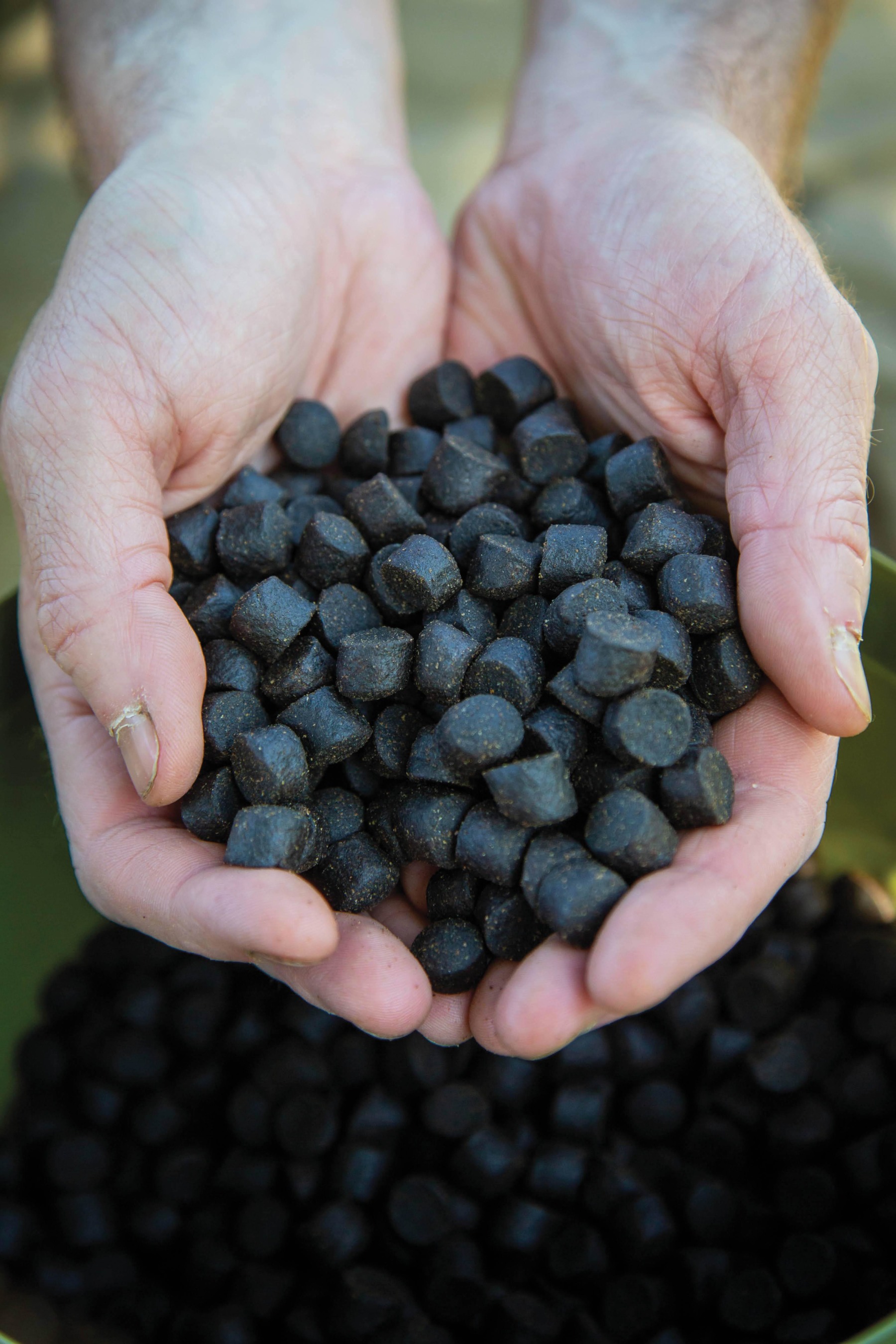
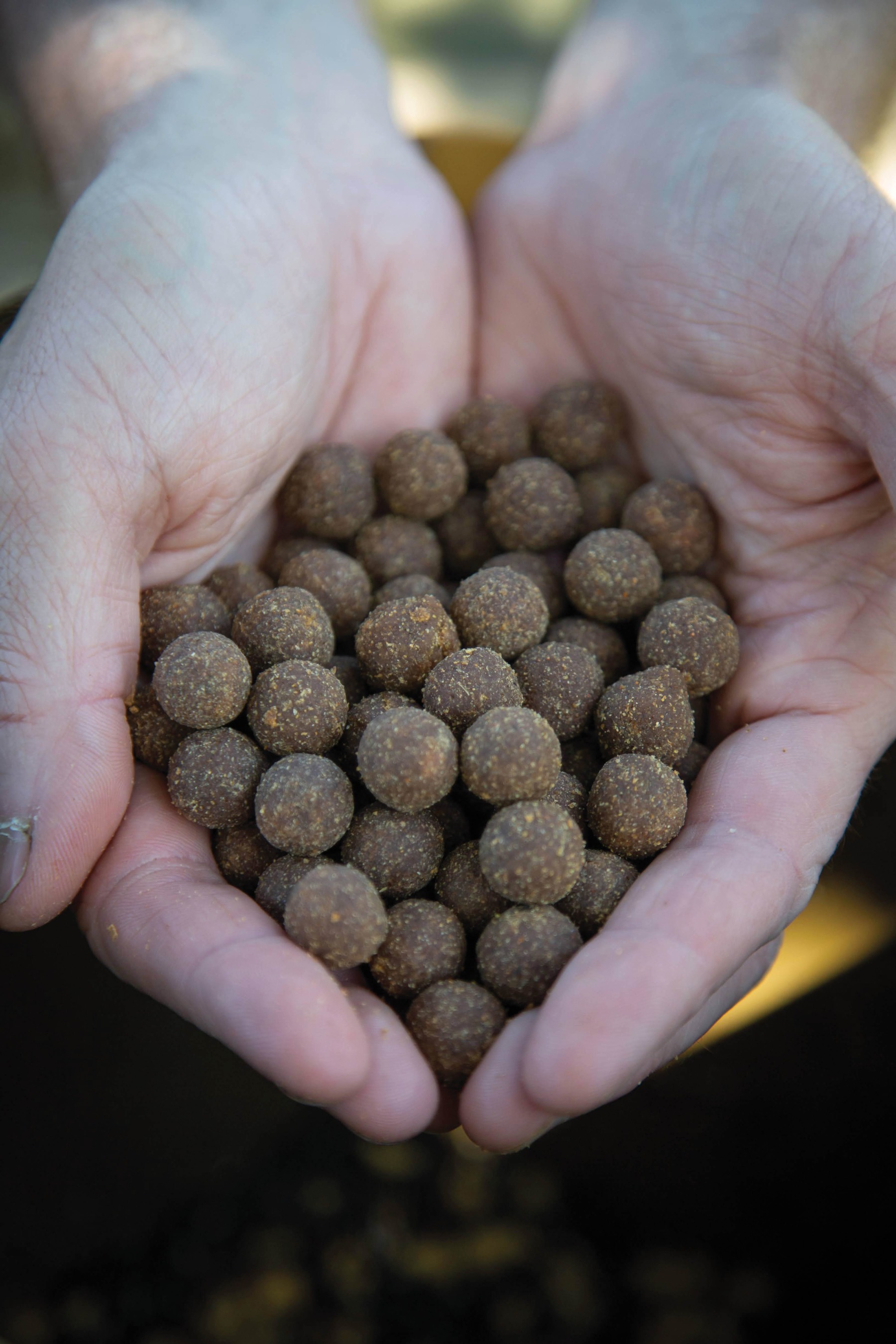
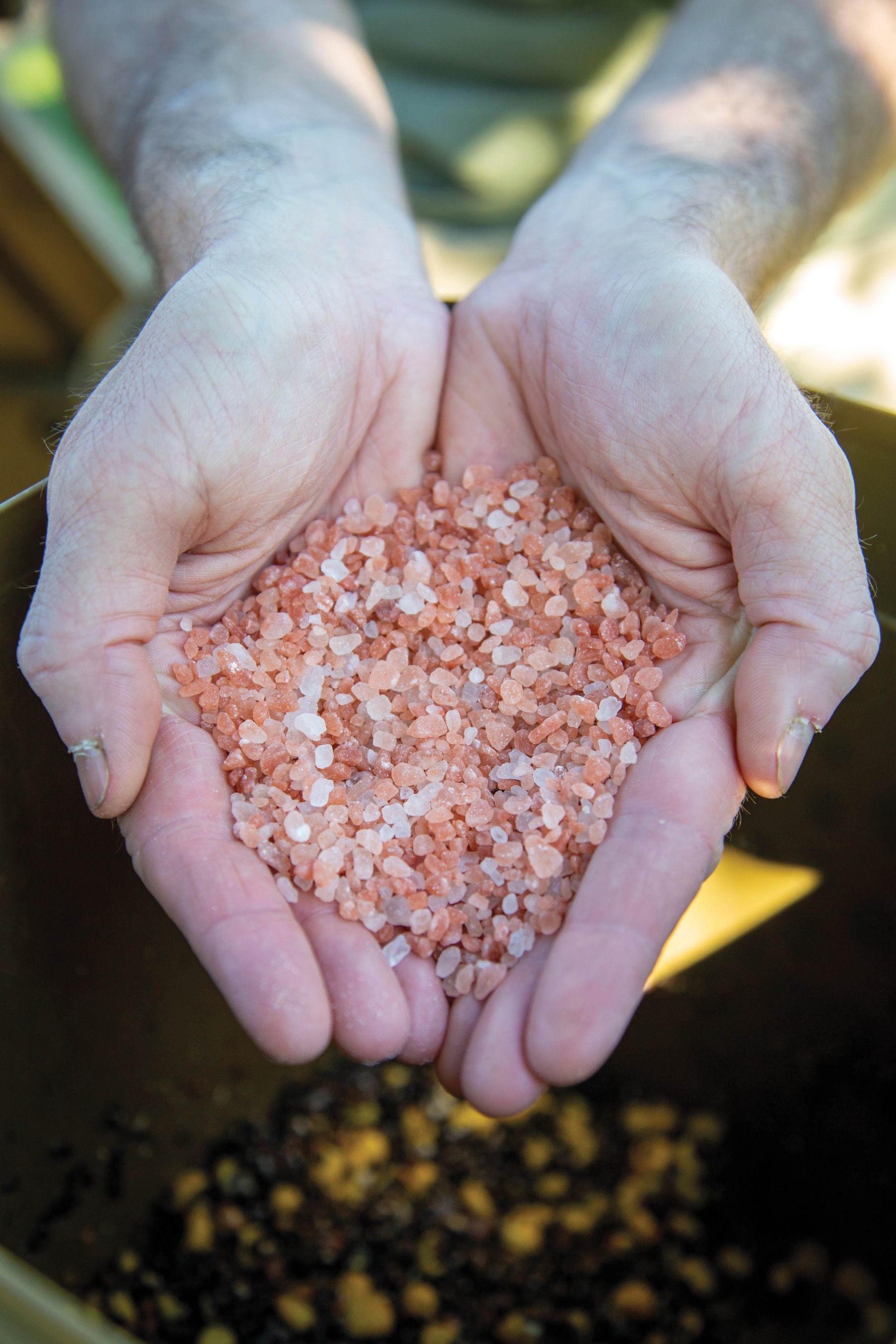
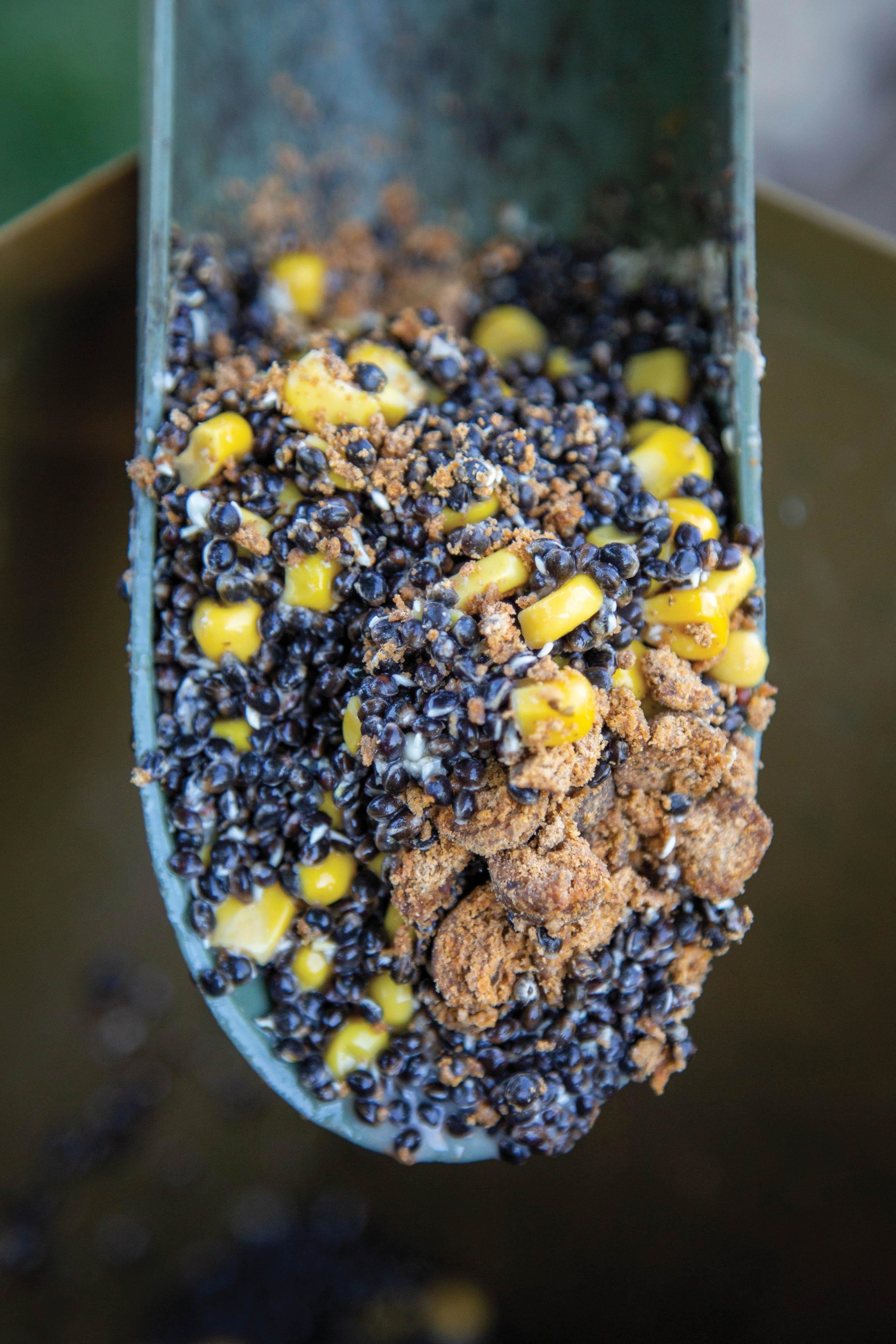
DOUBLE BUBBLE!
An hour before dawn, the middle rod placed on the hard spot pulled up tight and I was into my first Arrow Meadow carp. It was a spirited fight from what felt like a small fish. I was conscious that the spot was beyond the island, and I knew I would have to be careful and take that into account. As it turned out, everything was all straightforward. The fish came to my side of the island without too much issue, and did most of its fighting in the bay to my right. Within a couple of minutes, one of the Simmos that had been stocked popped its head up, and I scooped a small, double-figure mirror into my waiting net. It wasn’t yet light, so I decided to rest the fish and wait half an hour before photographing it. Whilst I waited, I took a short walk left and right of my peg. Under the bridge that leads to the island, I saw a small area of clouded water.
As I had a rod out of the water having landed my first fish, I decided to tie up another bag and drop it into the cloud. I placed the rod on a pair of single sticks while I waited for the light. Half an hour later, just as we were about to retrieve the first fish for a picture, the same rod hooped round as a better fish tore off into the bay next to the island. I sprinted the short distance to the rod and leant into a fish that was trying to make its way through the tiny patch of lilies and into the reeds on the far side.
The fight was spirited once again, and the fish did not want to give up. After I’d turned it from the reeds, however, it plodded back towards me, past me and then down the side of the island. Fortunately, on the Main Pool, pretty much the whole bank is accessible, so I just walked across the bridge to the island and followed it down the lake. Eventually, I managed to pump it back, and I poked my net through a gap in the reeds. The fish rolled, giving me the opportunity to see its large, apple-slice scales. I drew the fish over the net cord and looked in to see a lovely, heavily plated fish of well over 20lb. Tom and I wasted no time in dealing with the smaller fish first, a clean-looking double of around 12lb, and certainly one for the future. It was a nice fish, but nothing compared to what was waiting in the other net. Once on the mat, we could see that it was actually a lovely linear, its large scales running the full length of its body. It had a nice, pale belly, and dark, orange flanks and back. On the scales it went over 26lb. The little flurry of early morning action that had seen two fish landed was a great way to start the day.
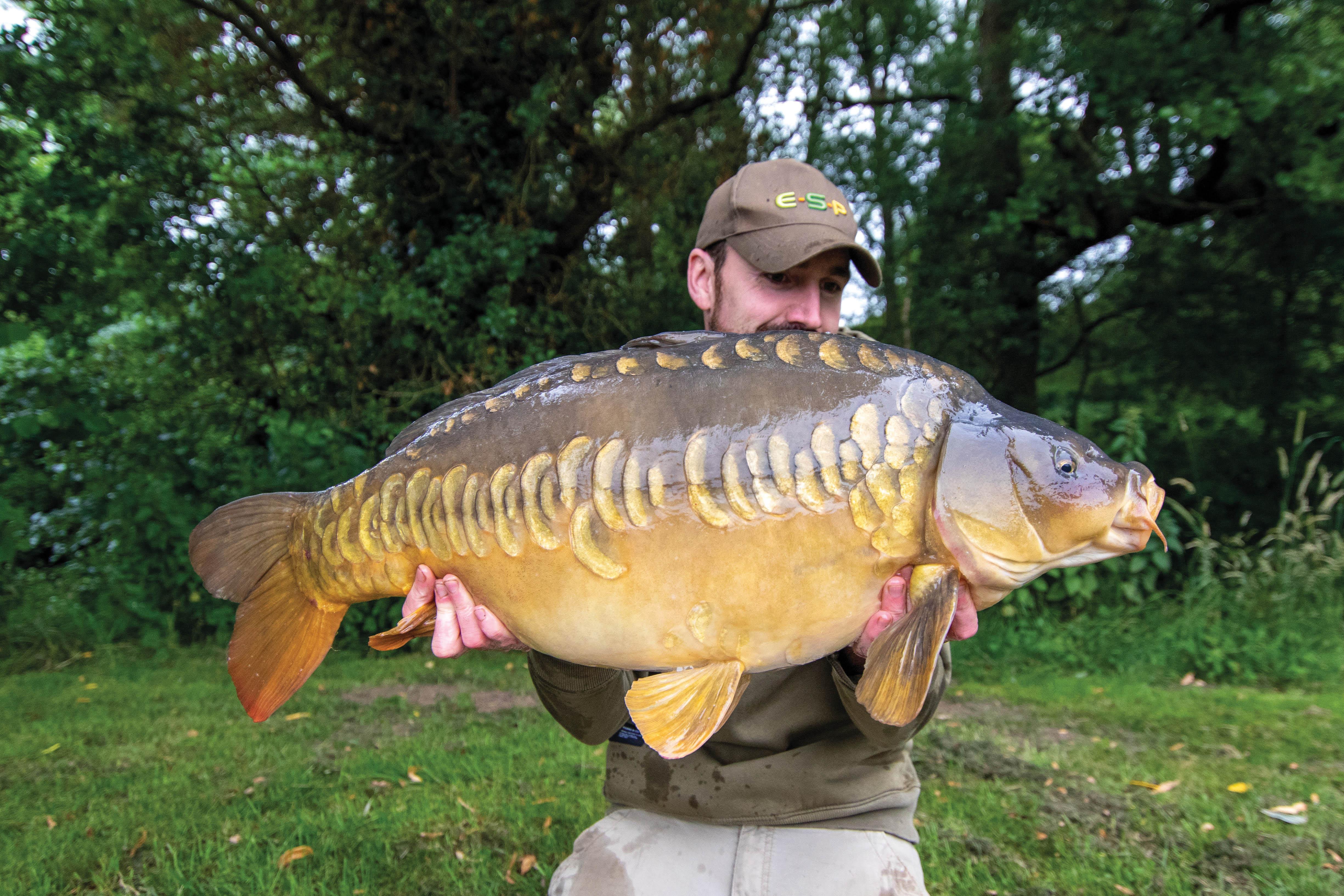
OUT OF NOWHERE
It was still early, but already it was quite hot, and was only going to get hotter. We could see that fish had begun to cruise around just under the surface, so I trickled in some floaters. Unfortunately, this brought no response. Bite time is normally first thing in the morning, but on these small lakes, it can be a case of setting your traps and giving them time. It’s often 24hrs or more before the fish drift back to the spot, and assuming it’s old bait they’ve found they’ll have a feed. I decided, therefore, to leave the rods where they were and keep disturbance to a minimum. I spent all day moving between patches of shade, trying to stay cool, but my efforts were to little avail.
Suddenly, out of the blue, around midday, the bobbin on the rod placed down to the right, under the bush where I had seen all the fish on the first day, dropped back as a fish came out the bay and back towards me. I picked up the rod and quickly reeled in all the slack before connecting with a fish somewhere between me and the dot island. Another pretty uneventful fight followed, the fish just ploughing up and down the channel between me and the island, never really threatening to get under it, or into the snags over to the right. I let the fish tire itself out before finally, I slipped the net under a nice mirror. The fish was paler than the first two, but equally lovely, with its broken line of linear scales. It had a similar row of sovereign-like scales down its back, and it was another solid fish. The session was going great.
By this time, it was just too hot for me to function. I reeled in the final rod and let the day pass, hiding from the sun where I could, and staying hydrated. My early start and Covid-induced fatigue had taken their toll, and I dozed happily on one of the picnic benches at the back of the swim until early evening.
When I awoke, I had another walk round to see what was going on, and to make sure that I wasn’t missing anything up the other end of the pool, which I couldn’t see because of the island. When I got up there, I found exactly that: something I had indeed been missing. In the bay with the tiny patch of lilies, near to where I’d had my second bite that morning, there was a huge area of coloured water. As I watched, fresh patches boiled up to the surface, and I could see bits of disturbed detritus coming up. Clearly, a couple of feeding fish were responsible. I needed to get a rod on them, immediately!
I trotted back to my swim and tied up a solid bag. I put fewer pellets in this time, and more halved Krill Active, to ensure that there would be larger food items included that would be less likely to get wafted around by the feeding carp. I swapped the colour of my imitation corn to white in an effort to improve its visibility. It wasn’t a massive change and it probably made no difference. I have, though, always believed that white is brighter than yellow, and easier to see in murky water. I lowered the bag in as gently as I could, and slackened the line right off. I set the rod on single sticks and then quietly settled back amongst the undergrowth to wait for a bite.
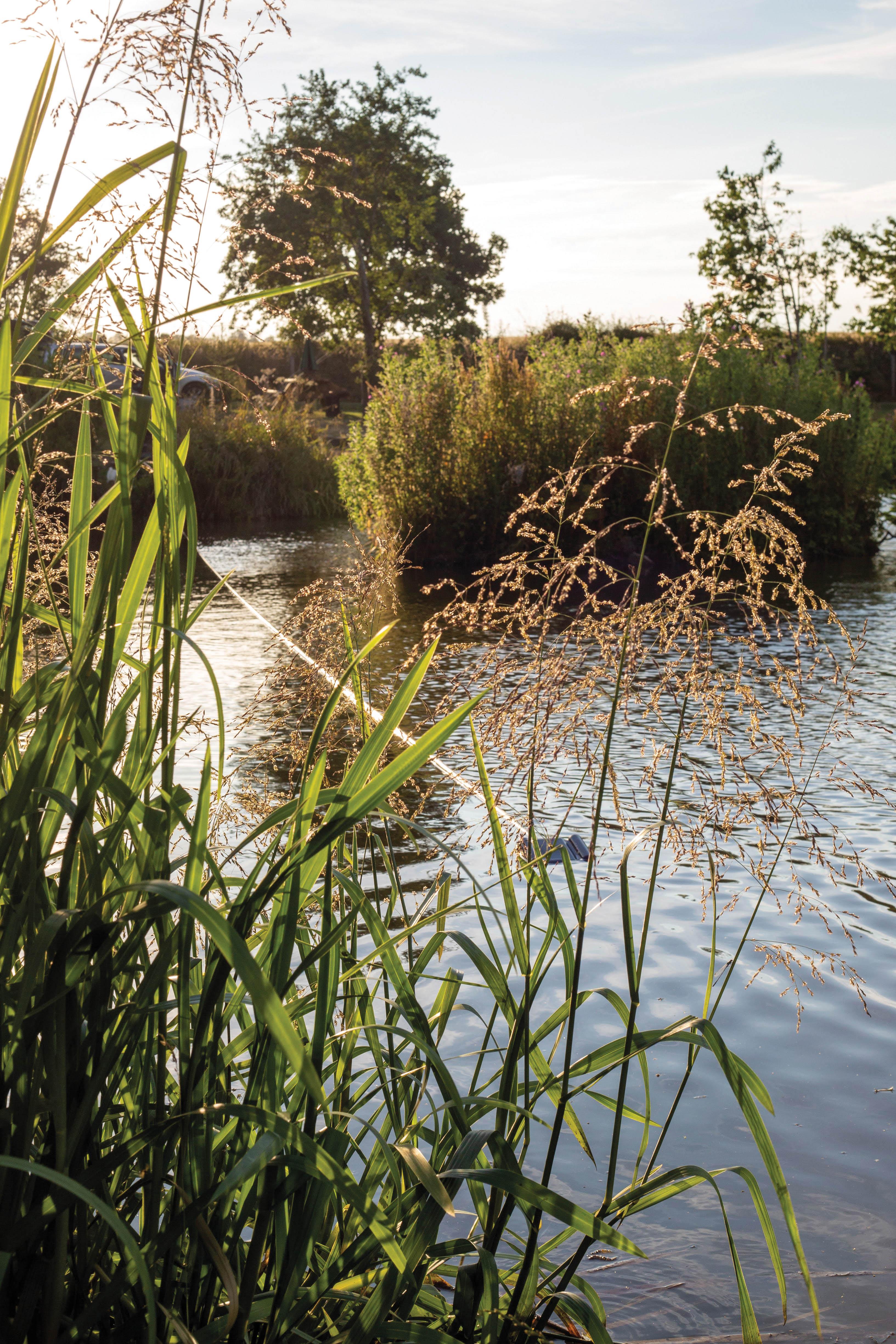
Despite all the feeding activity, after an hour I still hadn’t had a bite. As mentioned earlier, on small, imitate waters, it can often be a case of setting your traps and then waiting for the fish to return the following day. I was just thinking that I would have to leave the rod in place overnight, when off it went. The fish tore straight through the middle of the pads before I could even get to the rod. I lifted into it, but could see immediately that my line led to the pads, whilst the fish was out the other side, heading away at a completely different angle. As the area of pads were so small, I applied a little extra pressure. The line pinged free, and I was in contact with a fish that, by this time, was out in open water.
Again, rather than take any risk, I calmly walked over the bridge to the island. This allowed me to play the fish from a different angle, and much more safely. It took me a while to pump the fish back in after it had made its way out to the main body of water, but within five minutes, it was rolling in front of me in the margins. Then, into the net went a really cool-looking linear. It was much darker than the previous fish, and more of a slate grey across its back. It still, however, had the creamy belly indicative of the area and the murky water. It was another twenty.
My first full day on Arrow Meadow could not have gone any better. This time, we did the photos from the island, with the willow and the bench as our backdrop. After a couple of quick snaps, she was released. It was then time to set everything up for our final night.
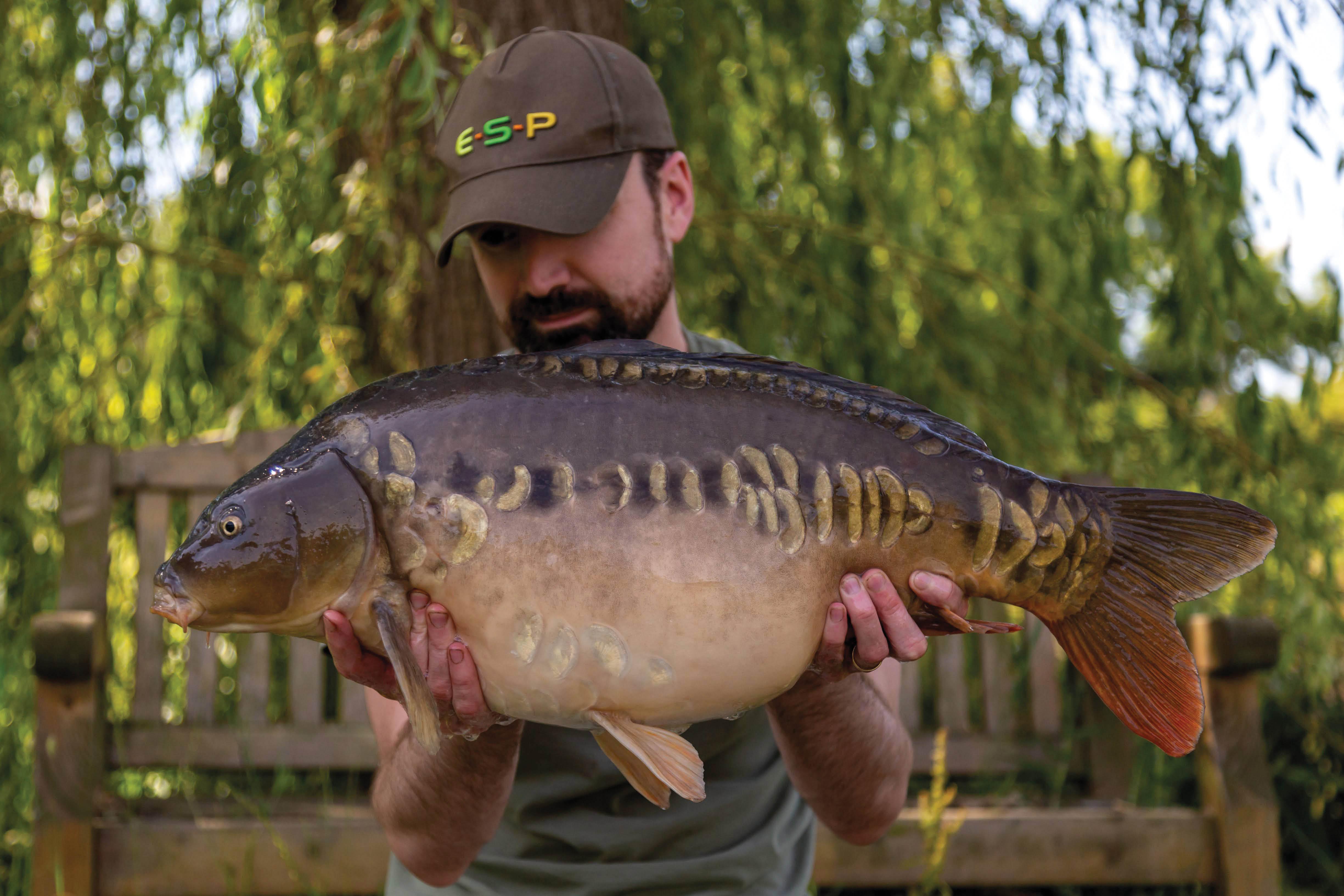
KEEP PRIMING
Throughout the trip, I had been trickling bait onto a number of marginal spots, and whilst most had remained quiet, one had caught my attention. There wasn’t a huge amount of activity there, or clouded water over it, but every now and again when I checked it, there would be just the slightest disturbance, or the water could be seen rocking. I felt that the area demanded a rod for the night. Even though I couldn’t be 100 per cent sure that I’d seen any fish there, I just felt that they were in the general vicinity. As such, I believed that the area would give me the best chance of a bite.
The spot itself was right up against the bank, tight under some sedges and in a small channel between a set of pads and the bank. I used the spoon of the Bushwhacker to push the solid bag right under the overhanging fronds before I tipped out my rig, hookbait and free offerings. In the spoon was the mix of boilie, hemp and pellet I had used all trip, along with a sprinkling of corn. I set the rod and placed a net by it. With the rod down the bank from my main swim, I didn’t want to be messing around during the dark, searching for a net.
Back in the main swim, the right-hand rod went on the hard spot that had done the bite the night before. I moved the left-hand rod from the left of the island to the right, merely because I’d seen more fish that side, between the two islands. Everything else on all the rods remained the same, with the exception that I was now on white corn and not yellow.
Another big tidy-up was called for following a further day spent chasing them around. It was dark by the time I’d sorted everything, and gratefully, I crashed out on the bed once again.
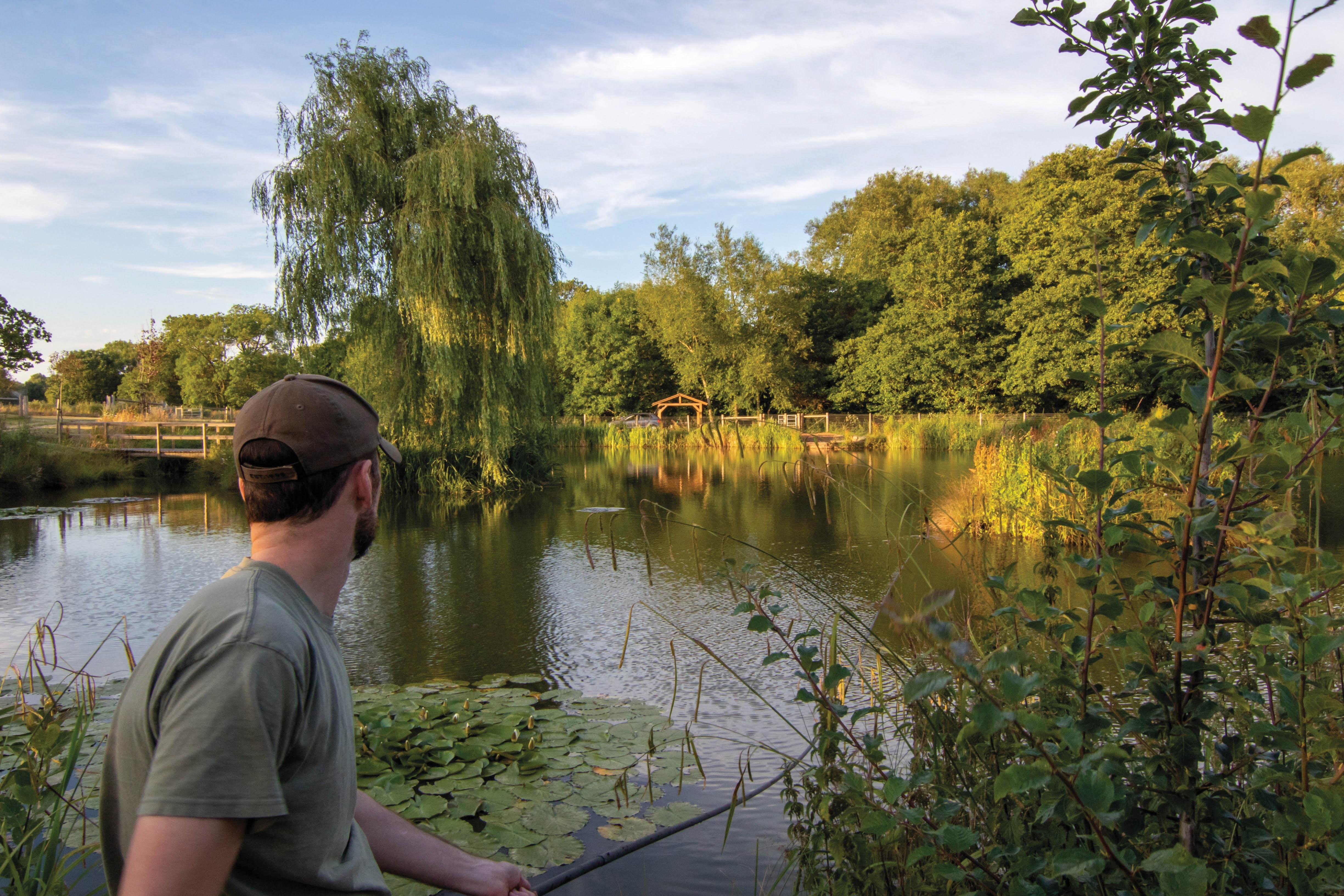
THE MOTHERLOAD!
I slept soundly until early the next morning, when I was awoken by my sounder box. Looking down, I could tell from the colour of the LED that had lit up, that the rod that had gone off, was the one placed on the other side of the bush from me, down the edge. I hopped out of bed and made my way around the bush. The fish hadn’t gone far, but when I lifted into it, it felt that bit bigger than the previous ones. It plodded around in front of me, between the bank and the main island. There was a large area of pads in the bay, but it never really tried to get to them. The fight, then, was a simple affair, although somewhat drawn out. Every time I tried to bring the fish up through the water, it would use its weight and stay deep. The hook-hold didn’t look great, so I chose not to put too much pressure on it.
Eventually, a huge pair of shoulders came up through the murky water and a big fish, covered in scales went into my waiting net. The fish looked every ounce of 30lb, and with dawn not far away, I left it in the net and redid the rod. Having tied up another rig and another bag, I placed everything in the spoon and pushed it back down into the corner. I shipped it all the way out to the treeline, and as I was just one section short, the line on the other rod started to pull up tight. As I was so close, I continued with placing the rod. I would deal with the fish that had picked up my other hookbait once my rig and hookbait had been dropped. I added the remaining section and deposited the rig under the trees.
By the time I’d placed the rod on its rests, the bite was in full flow and the fish was taking line. It was then that I realised how foolish I had been. The fish had kited on a tight line and had made it to the other side of the dot island. On Arrow Meadow, if you are in contact with a fish and it goes behind an island, it’s possible to get the rod high enough to let the fish continue, before you deal with it as it emerges from the other side. On this occasion, I’d delayed getting to the rod, however, and unfortunately, that had allowed the fish to get behind the island with the line going around it, rather than over it. It was a basic, schoolboy error. I could tell something was wrong as soon as I picked up the rod, and after a couple of seconds, the fish was free and I reeled in a large branch.
I was absolutely gutted. I’d prioritised getting the other rod out rather than attend to the bite, and I put that down to fatigue and dehydration. I had a quick look back in the net at the fish I had landed, and that boosted my morale again. The loss was quickly forgotten. I gave Tom a buzz and we set about sorting the photos.
Sunshine made its way through the reeds as we lifted the fish out and onto the mat. The fish’s frame was absolutely colossal, and its shoulders were immense. It combined all the best features of the previous four I had caught. Clusters of massive, apple-slice scales adorned its flank. Its dark back had orange hues, and the fish had the same cream-coloured belly.
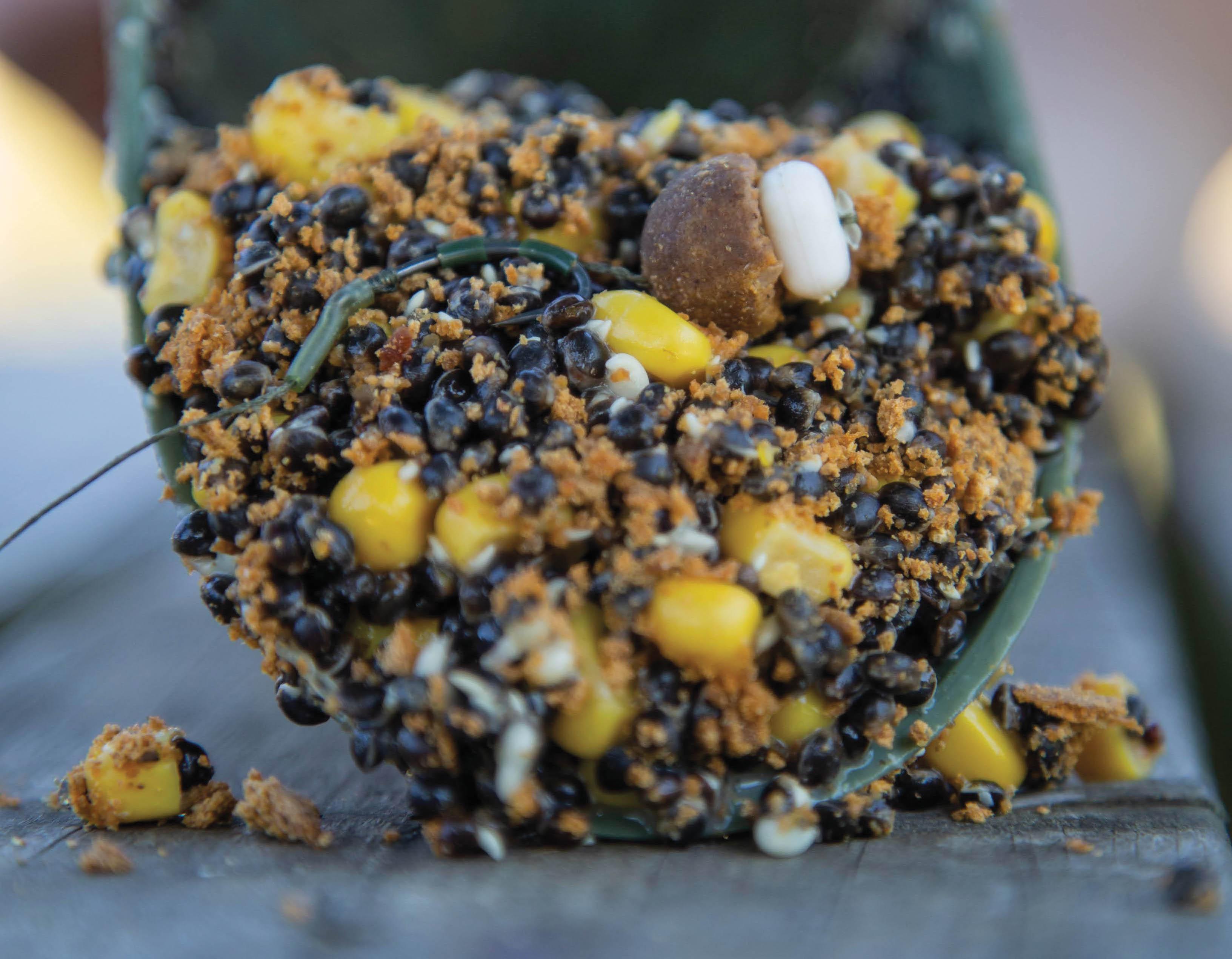
I recognised the fish from Alan’s album. She was one of the AJS fish that had been stocked in 2019. Whilst it was one of the friendlier ones, having been caught seven times since, I certainly wasn’t complaining. On the contrary, I was absolutely thrilled. It was an incredible culmination to the session. I really didn’t want to put it back and could have looked at it all day. Tom did a great job on the camera, before it was indeed time to return her to the water. We both stood and watched as she powered off into the depths.
Alan kindly offered us a third night, but I was really feeling the effects of the last couple of days, and was utterly exhausted. We packed our gear away slowly and said our goodbyes. The final fish had been a fitting way to end the session, and I drove the entire way home with a big smile on my face.
Find out more about this fishery- https://www.arrowmeadowfishery.com/
